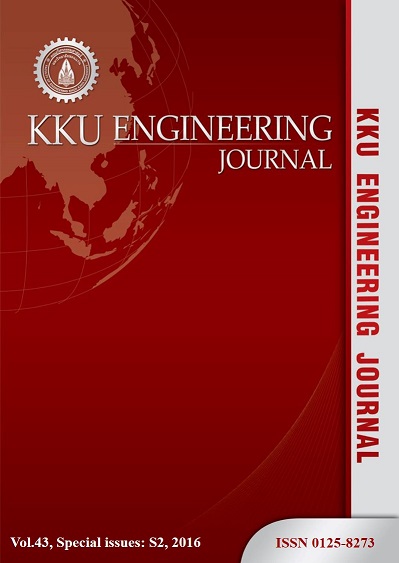Improvement of acoustoelastic coefficient for residual stress measurement by ultrasonic in low carbon steel
Main Article Content
Abstract
This research aimed to exhibit the effects of variation of grain size, hardness and ultrasonic energy input for improving the residual stress measurement by ultrasonic in low carbon steel. Low carbon steel (SS400) was used to vary its grain size and hardness by fully annealing with 6 different temperature levels. The grain size and hardness of each specimen were analyzed by the microscope and hardness testing machine. Then each specimen was applied static tension load below yield point. The load was increased at 25 N/mm2 (MPa) in increment. Through transmission technique with probe 2 MHz and surface ultrasonic wave were used. Ultrasonic energy input generated from Pulser-Receiver was changed its Pulser Voltage (PV) and Pulse Repetition Frequency (PRF). Traveling time of ultrasonic surface wave was measured by using Pulser/Receiver and displayed byan oscilloscope to calculate the ultrasonic velocity. The average of acoustoelastic coefficient was calculated based on the correlation between ultrasonic velocity and tensile stress. The results showed that the speed of ultrasonic waves depended on grain size and hardness of material. The ultrasonic energy input affected to the residual stress measurement. Finally, the constant value for residual stress measurement was created to increase the accuracy of residual stress determination.
Article Details
This work is licensed under a Creative Commons Attribution-NonCommercial-NoDerivatives 4.0 International License.



